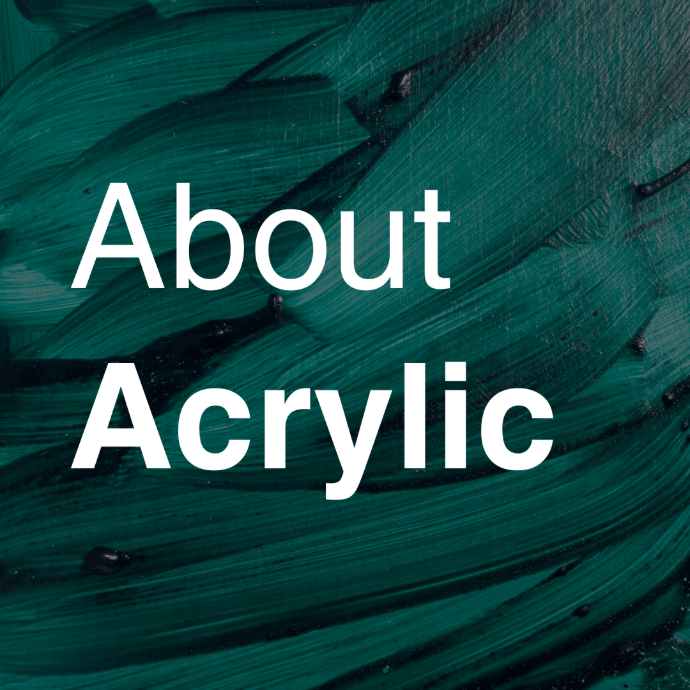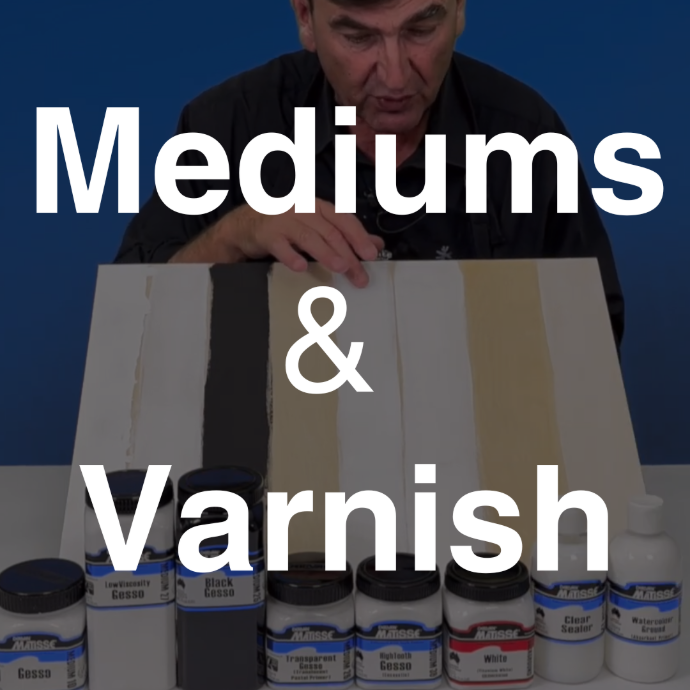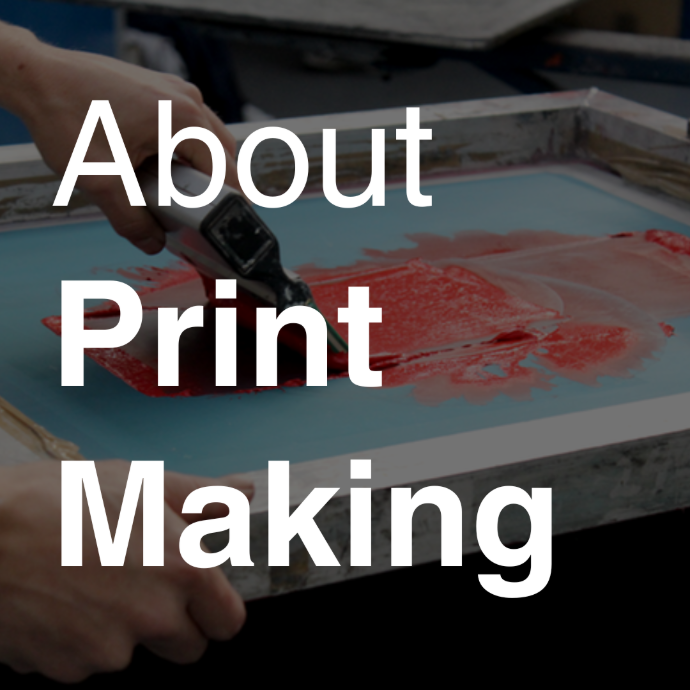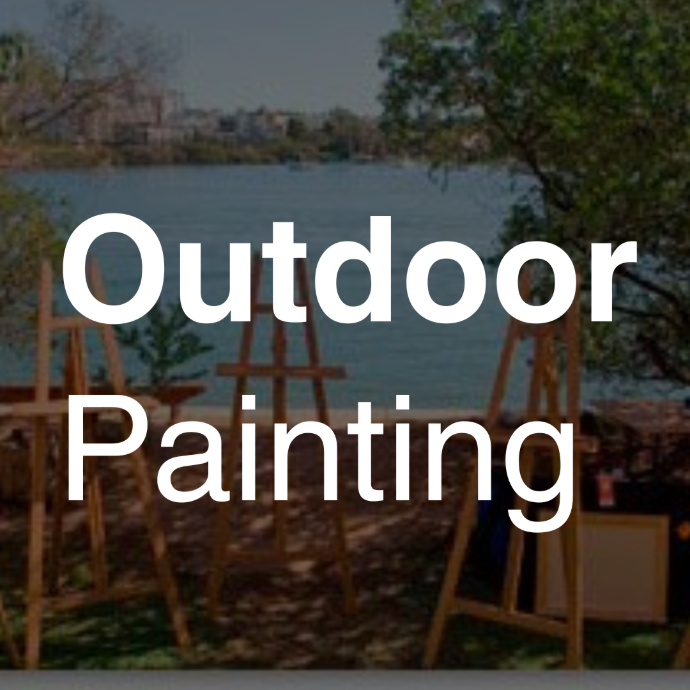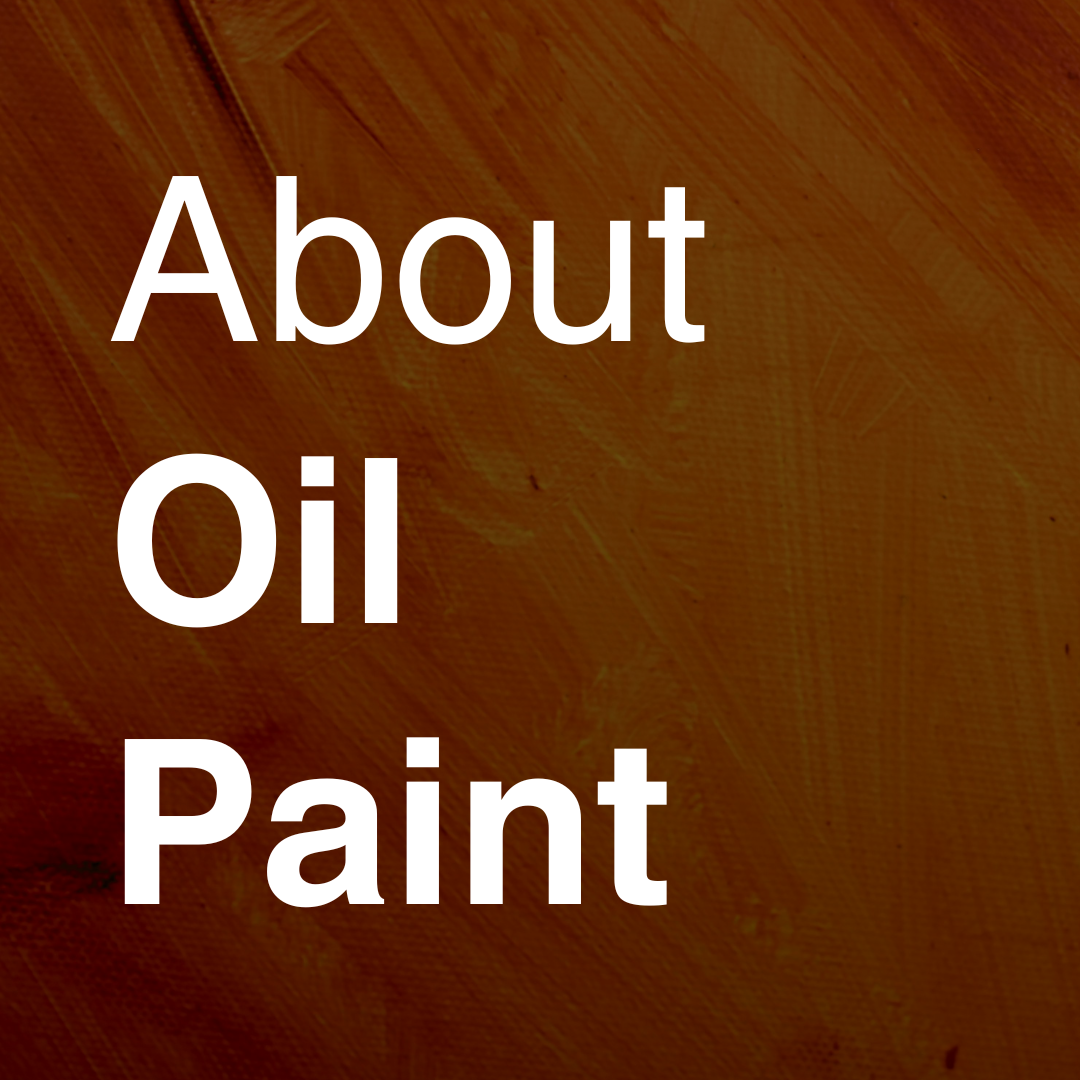Frequently Asked Questions
Most Frequently Asked
Yes, however mixing colours within the same range is preferable as the colours will have been formulated similarly and will be more compatible. The best way is to combine the paint and see if there is any unwanted change in consistency. For example, if it becomes lumpy or separates, then it would be best to choose other paints to blend.
Start! Unfortunately, this can be easier said than done. A blank canvas can be intimidating, and one way to overcome this is to coat it with a couple of layers of paint of your favourite colour. It makes a canvas seem less daunting this way and makes you connect canvas, paint and brush and hopefully get your painting journey underway!
Yes, house paint can be used for art but is it not without limitations. If you have to cover a large surface, it can be an economical solution. However, the archival qualities of house paint are less than that of a good quality artist paint, and you will have to weigh up if that is important to you. House paint also has a universally thin, spreadable consistency, which makes it a poor choice for artworks that require texture.
If a smoother finish is required, it is best to use a paint that has been formulated for that purpose. Matisse paints come in Structure and Flow and Fluid formulas. Flow and Fluid are the smoothest options. Matisse Structure is thicker and best for textured finishes.
While a small amount of water can be used to dilute paint, using too much will result in a streaky, patchy finish. It is best to use MM9 Acrylic Painting Medium. This medium will maintain the colour of the paint as it promotes a smoother consistency
Try MM9 MM9 Acrylic Painting Medium is a pure acrylic binder used in formulating Matisse colours and acts as the principal paint dilutant when not using water. Water may be used with the Matisse colours. However, the addition of more than 30-50% water to Matisse colours will reduce not only their colour strength (which, of course, is generally the required result) but will also reduce the "binding" capacity of the Matisse colours. Water may lead to Matisse colours, becoming water sensitive. Although white when wet, it will not alter the colour of the paint when dry, (however it may increase the gloss level).
MM9 Acrylic Painting Medium with its low sheen and excellent adhesion makes it a suitable transparent primer or surface conditioner for canvas, paper or board.
We would recommend two brushes to start. The first would be a firm bristled flat brush, and a round tipped brush. These two choices will give the beginner room to experiment without too much investment. Generally speaking, flat brushes are suitable for bold brushstrokes and covering larger areas with paint. The size of the bushes will depend upon how large you want your painting to be and the techniques you wish to employ. Also, try to visit an art store to get a feel for the sort of brushes you like rather than just buying them online. How the brush feels in your hand is essential.
Work quickly! What is happening is that the paint is slowly drying on the palette, and the tacky consistency develops. Another option is to use a misting atomiser. Fill it with water and very lightly mist the paint on the palette to prevent it from drying out. Alternatively, use MM1 Drying Retarder to slow drying time.
The fundamental difference is that acrylic paint is water-based, and oil paint is oil based. Acrylic paints also dry quickly and can be cleaned up with soap and water. Oil paints can take months to be completely dry and require a solvent such as mineral turpentine for cleaning up.
Try holding the caps under got water for a minute or so. Use a cloth to unscrew the cap and clean the dried paint from the container thread before replacing.
About Acrylic
Yes, but only in specific ratios. Never add over 50% water as it dulls the colours and affects the adhesion qualities of the paint. If you want to thin paint and maintain the colour and integrity, we suggest the use of a painting medium like Derivan Polymer Gloss Varnish, or Matisse painting mediums.
Start! Unfortunately, this can be easier said than done. A blank canvas can be intimidating, and one way to overcome this is to coat it with a couple of layers of paint of your favourite colour. It makes a canvas seem less daunting this way and makes you connect canvas, paint and brush and hopefully get your painting journey underway!
Yes, house paint can be used for art but is it not without limitations. If you have to cover a large surface, it can be an economical solution. However, the archival qualities of house paint are less than that of a good quality artist paint, and you will have to weigh up if that is important to you. House paint also has a universally thin, spreadable consistency, which makes it a poor choice for artworks that require texture.
Our Phthalo Blue is “green shade” - PB15.3 however we are just in the process of making the less popular (but still in demand!) red shade. The Phthalo green is a a true Phthalocyanine Green (ie PG 7) - and is blue shade as such - the yellow shade that many refer to is actually Cyaninie green PG36 (we call it Emerald Green PG36)
By and large there is no real shelf life of the products - as long as they are kept in a cool place (i.e. under 30C) and the lid is on tightly to keep the air out they will last for many years (we have had people who have brought back half full jars that while a bit thick were still usable - after 30 years) however leaving the lid off even for an hour each time you use them or letting them get warm (i.e. over about 35C) will limit their life to only a few years or less in extreme cases.
There are different ranges of paints aimed for different situations. The paints used by children need to be non-toxic and in large quantities. The colours are often basic and have a thinner texture. Conversely, artists want a range of sophisticated colours that are lightfast and pigment dense. Artist's paints are defined by a series number, and the higher the number, the higher the price.
Some budget-friendly artist lines lie somewhere between children's’ and artists paints. These often have a single price point but do cover the spectrum of artist’s colours.
Used on their own, acrylic paints do not work well as glazes. However, when used in conjunction with one of the Matisse varnishes such as MM7 Polymer Gloss Varnish, thin glazes can be easily created. For thicker glazes, the use of MM4 Gel Medium (Gloss Finish) is recommended.
If a smoother finish is required, it is best to use a paint that has been formulated for that purpose. Matisse paints come in Structure and Flow and Fluid formulas. Flow and Fluid are the smoothest options. Matisse Structure is thicker and best for textured finishes.
While a small amount of water can be used to dilute paint, using too much will result in a streaky, patchy finish. It is best to use MM9 Acrylic Painting Medium. This medium will maintain the colour of the paint as it promotes a smoother consistency.
We would suggest the tiniest amount of water and mixing - to resurrect it, it will be more about the actual stirring of the paint - i.e. if you put it under enough "sheer" (strong mixing) and add the smallest amount of water (like 1-5%) it should go back into a workable format.
What has probably happened is over time some of the water has evaporated out plus when the paint is left for an extended period the water can swell some pigments (in fact all pigments behave in very different ways) - time and heat will have varied effects on the “wet” colours. So it might take quite an effort to stir it at first - however it should get moving - if you don’t mind get your “mix master” dirty you could try it in that - BUT at a very low speed - more like mixing dough rather than whipping cream - I can also understand if you are not that keen to use your kitchen appliances! So maybe split it up into manageable amounts - say 100ml or so and then give that a go - you should be able to revive it - but as I say it will take some effort
- Which black paint is the most neutral black for the purposes of mixing darker shades?
- I have used Atelier Free Flow carbon black in the past and it has a different finish or sheen to Global impasto professional acrylics. The black seems to be more (matt) while other colours are (pearl/low sheen). Is there a way to compensate for this?
- Are Matisse products compatible with the above?
- Probably the most neutral black is Ivory black - Carbon black has a very slight blue tinge to it (in comparison) and mars black is somewhat warmer.
- You can alter the sheen levels easily using MM4 Gel Medium with Matisse structure, or MM7 polymer Gloss varnish with Matisse flow (purely differences in viscosity), you can adjust the sheen levels up. If you wish to matt a colour down, using the MM5 Matt medium is the way to go - this will not alter the colour but will make the finish very matt.
- Officially we would say no you should not mix brands - simply because we don't know what is in other manufacturers products and they don't know what is in ours. So officially - no you should not mix brands - However with that said i know there a many artists who do - and have not experienced any problems. Further, in theory there is not much reason to suspect there should be a problem - with the exception of "non standard" paints or mediums - i.e. the sort of mediums that require particular "treatment" applications. or technique - for instance our cracking medium should only be used with our background paints or Students paints.
Work quickly! What is happening is that the paint is slowly drying on the palette, and the tacky consistency develops. Another option is to use a misting atomiser. Fill it with water and very lightly mist the paint on the palette to prevent it from drying out. Alternatively, use MM1 Drying Retarder to slow drying time.
Acrylics are water-based and can be moved while still wet. However, once dry acrylics form a hard, plastic skin that remains unaffected by water.
Essentially, as the water evaporates, the paint remains behind.
Many artists mix colour by eye, but the only way to ensure that the colour matched from batch to batch is to measuring cups and spoons and keep a record the ratios of paints used.
Try MM9 MM9 Acrylic Painting Medium is a pure acrylic binder used in formulating Matisse colours and acts as the principal paint dilutant when not using water. Water may be used with the Matisse colours. However, the addition of more than 30-50% water to Matisse colours will reduce not only their colour strength (which, of course, is generally the required result) but will also reduce the "binding" capacity of the Matisse colours. Water may lead to Matisse colours, becoming water sensitive. Although white when wet, it will not alter the colour of the paint when dry, (however it may increase the gloss level).
MM9 Acrylic Painting Medium with its low sheen and excellent adhesion makes it a suitable transparent primer or surface conditioner for canvas, paper or board.
Mixing white is a white that is not as strong as the standard ubiquitous Titanium white - which is a very bright opaque white, long lasting and a very stable pigment. However many people find the standard titanium white quite overpowering when wanting to achieve those subtle hues or highlights in a picture or maybe when trying to "wash out" the colour to represent distance in a landscape.
We have just added Zinc White to our Matisse Structure and Flow range. Alternatively you can use the titanium white you are using at present and "reduce" its intensity with some medium (Structure/thick acrylic use a little Impasto medium or Gel medium - Flow formula or thinner paints use polymer matt varnish - 10% varnish should be plenty mixed in well with the paint) this is the easiest (because you already have the white!)
The fundamental difference is that acrylic paint is water-based, and oil paint is oil based. Acrylic paints also dry quickly and can be cleaned up with soap and water. Oil paints can take months to be completely dry and require a solvent such as mineral turpentine for cleaning up.
We can't give you guarantees that the 2 brands are compatible - while we have done a little bit of testing with several other brands and our products - it is by no means exhaustive and even if it was the other brands could change their formulations any day of the week and all the testing would be obsolete. With that said I am unaware of any issues between the two products however I would exercise caution as the interactive obviously has an exaggerated amount of drying retarders in it and thus will have a substantially different drying rate to that of Matisse.
What makes fluro colours fluro, because of the way they actually work, is their degradation process (the way the UV light works on an atomic level - energises the molecules and which then gives off wavelengths in our visible spectrum - so in effect there is more light coming out then we perceive going in - however because of this the pigments physically break down very quickly). There are no Fluro pigments on the market that will not fade - rather quickly (i.e. 6-12 months in direct sunlight) and any way that you stretch this time out - (by limiting the amount of UV light that gets to them) will also help to reduce their brilliance - there is more on this page http://www.derivan.com.au/derivan-products/fluorescent-products.html
So, in short, I am afraid there is no real way - with the technology that is available today, to have a fluro pigment work well but last for many years.
And yes they are in an acrylic paint format :)
You will need to test it yourself - we do do some testing with our products and other brands - however, this is by no means exhaustive - and even if it was there is always the chance that another brand will change formulas without our knowledge and any testing we did would be obsolete.
I would advise caution when working with Atelier and any other brand if it is the atelier interactive - as it has a prolonged drying time and can re-wet problems may occur when mixing with "normal" acrylics.
With that said I am unaware of any issues mixing brands other than when a specific medium states that it is only to be used with certain products - i.e. our cracking medium can only be used with background colours or Derivan students as a chemical reaction takes place to crack the paint - we are aware that some other paints work sometimes, but we can only guarantee it to work with our products.
Try holding the caps under got water for a minute or so. Use a cloth to unscrew the cap and clean the dried paint from the container thread before replacing.
One solution is to use Matisse or Derivan paints that have a convenient flip top tube. The cap is also clear, so you can see what the colour is at a glance. However, if you continue to use screw caps, it is best to wipe the top clean after each use and remove any dried paint before screwing the cap back on.
Yes, however mixing colours within the same range is preferable as the colours will have been formulated similarly and will be more compatible. The best way is to combine the paint and see if there is any unwanted change in consistency. For example, if it becomes lumpy or separates, then it would be best to choose other paints to blend.
About Safety
There is a very small amount in each batch
1 oz (29ml) in a 44 Gallon (166L ) drum
It is used to aid in adjusting the PH of the paint
There are two ways to approach this. The first is prevention. Some tips on this are as follows:
- More expensive brushes tend to shed less hair.
- Wash your brushes thoroughly in warm water and lightly pull at the bristles to remove any loose hairs.
- Do not wash your brushes in very hot water or leave them soaking for long periods. This can degrade the glue that holds the hairs into the ferrule of the brush and results in shedding hairs
If you are facing the problem of a hair in wet paint:
Pluck the hair out with tweezers if part of it protrudes from the paint.
If the hair is lying in the paint. Wrap a piece of cloth around your finger and lightly dab the hair to remove it from the surface.
If the pant has dried when you spot an offending hair:
Wet the area around the hair with a cotton bud and then try and remove the hair with tweezers. This may leave a small indentation in the paint. Try and smooth this by rubbing with the back of a spoon or coat with some paint of the same colour
If all these options fail then remember that most paintings are not viewed up close and that flaws such as embedded brush hairs are only really noticed by the artist. If you don’t point them out most people wont even notice.
Pretty well all of our paints are safe on kids toys - however to be ultra safe steer clear of the Cadmium colours - these have Cad or Cadmium in the name - however they also have quite obvious warnings on the labels as well.
My suggestion would be Matisse Background colours for wooden toys - they have a built in sealer and cover well with one or 2 coats, there are bright primary colours or soft muted tones. It is always advisable to apply a finish varnish over the top such as MM7 polymer gloss varnish - as far as toxicity of any of these paints goes once dry they are very similar in chemistry to a plastic bag - so while “eating plastics” is not healthy they are inert and really should not present any problems - (i.e. there are no freely available heavy metals or that sort of thing)
the MSDS can be found here for the Background colours and varnish
Once all the acrylics are dry (including the MM12) nothing will migrate from them. while they are not specifically designed to come into contact with food, because they are effectively an inert plastic once dry there should be no reason they would not be safe to come into contact with food. It should be noted that no testing has been done with microwave heating of the dried products and high temps will have an effect on the dried coating therefore avoiding microwaving or very hot foods would be advisable to be completely safe.
All our products have a GSH compliant Safety Data Sheets (SDS). Use this link https://derivan.com.au/safety-data-sheets
About Mediums & Varnishing
Yes, you can thin MM27 with water to put it through a power sprayer. You will need to experiment with how much water to add as each machine is different. Start with 20% water as a starting point and add more if required.
Although acrylics dry quickly, you should wait at least a week before varnishing to ensure that the acrylics have dried all the way through. Even if it’s dry to the touch, acrylics are often still wet underneath. If you varnish before the painting has thoroughly dried the varnish can end up cloudy due to trapped moisture.
First off, both a matte and a gloss varnish will protect your painting. However, gloss varnish will highlight any texture, deepen colours and make the overall surface more reflective. Matt paint will not alter the colour much and is not reflective, so textures are less pronounced. As such, it may better a better choice if the artwork is going to be lit by spotlights as any reflection will be minimised.
Some paintings are protected under glass and in frames. Most are not. Varnish creates a protective layer against grime, dust and the environment, which extends the longevity of the painting. It also makes it easier to clean. Varnishes come in matte, satin and gloss varnish options give the entire surface of the artwork a uniform sheen. Varnish also brings out the vibrancy of the colours so they look as good as they did when first applied.
Paint mixed with MM31 Open Medium will stay fresh on the palette for several hours, depending on both on the weather conditions and the quantity of MM31 Open Medium used
Paint mixed with retarder 3-5% will stay fresh on the palette for palette for several hours however if you use a higher amount of 15% you will find the paint may take weeks to cure - (it will still dry in a few hours but will not cure = it will remain water sensitive = it may blend when applying subsequent layers.
The amount of dilution can be from 1 part water to 9 parts varnish to equal parts of each. It will have a lot to do with your technique of varnishing and the temp and humidity. To start I would suggest trying 1 part water to 9 parts varnish and see how you go, the aim is to apply very thin coats, but a few of them - so if you use the 1:9 ratio I would suggest 2 to 3 coats to get an even sheen, making sure especially in humid weather you leave 24 hours between coats.
I strongly advise you to have a read of this page on our website which will give you the full info on how the water-based varnishes work and explain how to avoid the issues that can arise if applied incorrectly
Usually, you would apply two coats of background to give an even application. However, if it is over an already primed surface, you may be happy with one layer. sanding is only required if you want a very smooth surface to work on (for instance airbrush artists will quite often sand between coats) however for oils most people like a little bit of "tooth" or roughness to paint on - so, in short, it is up to you to sand or not - purely a matter of your preference
I hope this helps
We have a varnish MM33 UV conservation varnish which we developed just for your purpose. The MM33 varnish is a solvent based varnish which stops nearly 100% of light in the UV spectrum. (which is one of the most destructive wavelengths). Of course this will not stop fading altogether - however, it takes out the spectrum which is "no use" to us (as we can't see it) but is quite destructive and causes fading - while remaining completely clear.
It can also be redissolved at any time in the future to be removed for conservation or any other reason you may wish to remove it.
The main thing to be careful of is that the mineral turpentine (which is what the resin is dissolved in) does not affect your printed inks.
The product you are after is MM36 High tooth Gesso - Last time I was in NZ (which was a few years ago now) the lovely guys at Takapuna art store had it however it would be worth ringing to check. MM36 has a much higher tooth (i.e. rougher) than any other gesso on the market so can't really be substituted You can also mix it with the Matisse background colours to give a coloured encaustic ground)
Theoretically, you should be able to use MM12 Clear Sealer on the doll.
You might want to do a test patch first, then lightly sand the area first to help with adhesion.
For your finishing varnish, you can use our MM6 Polymer Matt Varnish.
We recommend a minimum of three coats of gesso.
A fine to medium grade sandpaper is recommended, depending upon your technique and the finish you want. Be sure to apply your gesso with a soft bristled brush to minimise the tooth at the priming stage.
Most house paint primers do not have sufficient tooth to be used by artists. They also have questionable archival qualities that can have negative implications for artwork over time. A standard artist quality gesso is a more reliable choice.
Many gessoes are thick and designed to be diluted with water. The exact ratio of water to gesso will vary between brands. As a general guide, add enough water to the gesso to a spreading consistency that you prefer. Avoid making the gesso too watery as it will be unable to completely seal the canvas.
ACRYLICS
When building up multiple layers of varnish on an acrylic painting, let the painting cure for 3 – 6 hours in between coats. Most modern synthetic varnishes will be completely dry after only a few weeks. While it may feel dry to the touch within 24hrs or so, a several – week time frame allows all the layers a chance to cure adequately.
Tip: Speed up the varnishing process by planning to do a few pieces on the same day. This way, they will all dry within a similar period of time.
OILS
Traditional dammar varnish and synthetic varnish can 24-48 hrs depending on the thickness of the painting. Cold temperatures and high humidity can slow the drying time by several hours.
Essentially, water-based varnishes are permanent and solvent-based varnishes are removable. Why would an artist want a removable varnish? Over time, even varnishes themselves can become dirty and discoloured. A removable varnish can be removed and reapplied if need. Permanent water-based varnishes are just that, so be sure that is the option you prefer as once applied and dried, there really is no turning back so best to test first to ensure the finish is exactly what you are after.
Yes. All of the varnishes we offer can varnish air-dried clay. As long as the Clay is Bone Dry. (Given at least a couple of weeks to dry)
You can also use the Terps based varnishes for outdoor items.
So coverage
Matisse Paint 6-8 M Squared
Turps Based Varnish 12M Squared
Polymer Varnishes with 10% water
12 M Squared
### + Which three of your acrylic colours would match the printer inks Cyan Blue, Magenta Pink and Yellow?
To get close to the 4 colours used in a printer you can use the following:
Matisse Structure, Flow or fluids
Black - Carbon black
Magenta - Magenta quin violet (however you will need to mix a little white in with this)
Yellow - Yellow Mid Azo
Cyan - this is a bit tricker - it is a blend of ultramarine blue (ultra blue) and Phthalocyanine Blue (Phthalo blue) and a little white
This will give relatively opaque colours - however the CMYK inks are transparent - so therefore when they are layered their combined colours give the rest of the spectrum (or so the theory goes!) - therefore if this is the effect you are after rather than adding white - you need to reduce the strength and opacity of the colours using a “reduction medium” clear - ie Matisse medium MM7 polymer gloss varnish or a thicker version - being Matisse Medium MM4 Gel medium - (there are matt version of these as well if you are after a matt finish) you will need to experiment to work out the ratios to give you what you are after.
I hope this helps
MM15 Final Matt varnish has a matting agent which, when stays still will naturally separate from the binding medium. When this happens, the varnish needs to be stirred gently. If the binding medium and matting agent is extremely separated, heat the varnish within a metal tin in a water bath. Making sure not to heat on an open flame. Proceed with caution as the fumes are toxic and need to be heated in a well-ventilated area as well as a face mask.
Black gessoes are best for an artist who are working in dark and muted paint colours, particularly oils as they are translucent. For example, if an artist were creating a dark, moody landscape, it would be easier for them to start with a black gesso rather than start with a white version and then paint it black. White gessoes also reflect more colour and result in an overall lighter painting.
"The word impasto refers to the application of a thick paint that leaves visible brush or palette knife marks. This medium is a full-bodied texture paste. It may be thought of as a heavy-bodied paint, free of pigmentation, however, it is not a clear gel and nor does it dry, on a microscopic level, as the Matisse colours dry. (See the section on water-based varnishes and how they dry for more detailed information).
The MM2 Impasto Medium dries with a very open matrix. This has the major benefit of allowing all the water to evaporate while losing less volume on
drying than other Gels or acrylic colours. Therefore mixtures of this medium and Matisse colours may be applied much more thickly in a single application than paint alone, without the fear of shrinking or cracking. Care should be taken when creating thick applications, taking into account conditions and drying time required.
MM2 Impasto Medium is most valuable for creating highly textured surfaces, brush stroke and impasto painting techniques, particularly when heavy built-up areas of colour are required. MM2 Impasto Medium dries to a low subdued sheen, which is similar to the sheen on a dried paint film of Matisse colours and it is equally water-resistant. MM2 Impasto Medium allows for free intermixing with the Matisse colours in any proportion. There is very little visual colour loss when up to equal volumes of a Matisse colour and MM2 Impasto Medium are intermixed. The presence of MM2 Impasto Medium on the canvas does not increase or lower the gloss rate of the finished painting, nor does it cause any light reflection distortion.
Despite MM2 Impasto Medium not being fully transparent when dry, it does not appear to alter the richness of Matisse colours in any substantial way. Although MM2 Impasto Medium can be used with Matisse Flow Formula colours, the Matisse Structure Formula colours are full-bodied acrylics and therefore complement the thick MM2 Impasto Medium.
The MM2 Impasto Medium lends itself suitably for use as a light modelling compound. It can be applied by knife or brush in heavy amounts directly onto the primed substrate and, when dry, fully over-painted with Matisse colours.
Do not use MM2 Impasto Medium as a transparent glue or size where its slightly milky opacity could cause some cloudiness. For this same reason, MM2 Impasto Medium should not be used for glazing effects. Subtle and delicate glaze colourations are best produced by intermixing MM8 Spreader and MM4 Gel Medium with water in various proportions to produce totally transparent glazes. Glazing with MM2 Impasto Medium will cover and distort the work with a slight opaque effect.”
Self levelling medium is quite thick. -You can add a small amount of water about 5% but no more. As this products consistency is a syrupy -bubbles do happen.
Here are some tips:
When tinting the medium stir gently and fold the colour in to the mix. Its a good idea to leave the mix to sit over night before use.
If you still have rogue bubbles after poring you can use Rubbing Alcohol in a spray bottle and this will remove the bubbles. For this removal technique to be most effective it is best to spray the bubbles ASAP.
Here is the formula
MM9 is Acrylic Painting Medium
MM1 is Retarder
MM5 is Matt Medium
MM3 is Surface Tension Breaker
AIRBRUSH MEDIUM
FORMULATION FOR 250 ML
MM9 45ml............18%......................
MM1 20ml............ 8% 22% BINDER
MM5 10ml............ 4%......................
MM3 10ml............ 4%
WATER 165ml............66%
.....................................................
250ml 100%
Matisse Medium MM31 Open Medium - slows the drying time of the paint but also possesses binding capacity - so certainly the binder will certainly assist in keeping the artwork flexible more so than say adding water or just straight drying retarder. However please be mindful that the open medium slows the drying time - and thus the curing time. Before rolling a canvas up it must be completely dried AND cured to avoid marking/deforming the film surface.
Actually we have the perfect medium for you - water based antiquing medium - originally made to put variegated glazes (i.e. exactly what you want to do) over painted objects - it sounds like it will do exactly what you want to do - originally made to make things look old - by using a burnt or raw umber to simulate time worn collection of grime - it can be used with any colour and I think will work exactly as you have described - you can find out more about it here:
http://matisse.com.au/products/matisse-mediums/full-list-of-matisse-mediums/mm20-water-based-patina-antiquing-medium-mm2m20/
Metal is a heat conductor and will intensify the heat as plastic will not.
In courtyards, gardens etc. Hardiflex is perfect for this as it is stable in all weather. I have been working on pieces for a couple of years to see how they cope with the weather, so far so good. However I have used an outdoor varnish and although it is good I need something that I have confidence in will stand the test of time. I have read about your two varnish finish and was wondering if you think this is the way to go. I have about 25 large works to varnish so would need bulk supply. I am looking for a satin finish as matt doesn’t quite cut it and gloss for outdoor would not be suitable.
You are correct the 2 part varnish system is the best way to protect your works from the weather.
To give you an example of how well this system works Wendy Sharpe used this varnishing techniques with our Matisse varnishes 20 years ago at the Cook and Phillip pool in Sydney's CBD
Other than IN the pool there is probably not a worse place you can imagine to put a painting!!!
http://www.wendysharpe.com/project-kellerman.html
These works are still standing up to the test of time 20 years later.
To give you an idea of coverage for this project 1L will cover approx 8 square Metres.
I would suggest you use the MM7 Polymer Gloss varnish as your isolation coat and MM29 Satin Turps Varnish as your final coat.
It depends on how fine the nozzle is on your airbrush you might find the matting agent will clog your nozzle.
Well I guess the first thing is to give it a good wash to get any grime and dirt/dust off it. Hopefully this will also remove any flaking bits of previous coating and fibreglass. I think if
you were to use Matisse acrylics to paint starting with a primer coat of MM7 polymer gloss varnish (or you could use MM10 gesso if you want a white base), then use the Matisse Flow (or you can use Matisse structure however I assume you dont want to much paint catching in smaller areas of detail and “filling them up” thus flow will give a flatter finish) Then finish off with MM7 polymer gloss - and then if it is to go outside - a couple of final coats of MM15 final finish turps based varnish. This should give pretty well the best finish. Otherwise taking it to a car refinisher to spray might be another idea? Depends on the finish you are trying to achieve I guess.
I think I can see your problem, as long as you don’t put more than 20% water with acrylic paint, once dried the paint will not move it will be water fast and will not bleed when applying a brush on varnish. Water colour paint is not water fast so once dried it can be reactivated with water, hence the smudging. If you want to get water colour effects (very thin consistency ) with acrylic paint, I suggest you mix the acrylic paint with MM9 acrylic painting medium (Mixed 50% water 50% MM)
You could try the Matisse Poly Matt varnish. You will need to apply it carefully as graphite pencil is not water- fast.
Acrylic Painting Medium has a thin viscosity (like milk), and Gel Medium is a thicker viscosity (more like an impasto medium but it dries clear). You can use both for glazing techniques but you will get different results.
The turps based varnish is not suitable to use on a chopping board. This varnish to be used as a final varnish coat on artworks.
It won't stand up to the wear and tear of a functional chopping board.
It should work. The block ink has enough binder in it to be permanent. You will need to put some tooth on the perspex to aid in adhesion. Matisse Clear Sealer should help. (make sure it has cured for a good week before printing) The other option is using sandpaper to create a key for it to adhere.
About Travel
Thank you for your inquiry, over the years we have sort clarification from various airlines on what is allowable etc and in fact a few years ago we had one person spend over a week contacting as many airlines as she was able to and in short we have never been able to come up with a steadfast answer!
However - the paints them selves are water based acrylic colours and present no flammability hazard - in check through luggage there should be no problem (some airlines are concerned that if they squash your bags - the paint may go all over your luggage and potentially someone else's - so to avoid this make sure you pack them well and in plastic bags is a good idea! you can find the SDS here incase it is requested and this is a good way to prove they are not flammable : http://www.derivan.com.au/assets/downloads/SDS/Matisse-Professional-Acrylic-No-Cadmium-Colours-SDS.pdf
http://www.derivan.com.au/assets/downloads/SDS/Matisse-Professional-Acrylic-Cadmium-Colours-SDS.pdf
So from a safety standpoint (other than spillage) there should be no problem - I would suggest though if asked you refer to them as "water-based colours" - rather than paints - as this is a more accurate description of them plus many officials heat the word "paint” and instantly think the worst and just default to safety first and treat them as being solvent based (as solvent based paint can be a concern) but as I said our paints are not solvent based -(with that said - to be 100% correct - I will mention the 250ml and 500ml turps based varnishes MM14, MM15, MM29, MM33 ARE solvent based - while you did not mention these I thought I would - these are solvent based and will not be allowed on an airplane except through specific air freight companies that are aware of the contents)
About Kindy Glitz
You will need to decant it onto a plate (you cant mix the water into the bottle as it wont mix thoughly) and add small amounts of water until you achieve the desired consistency
About Printmaking
This block printing ink has the perfect consistency for lino and woodblock printing, for works on paper. It is to
o thick to use for Screen Printing. May we suggest you look at our range of Derivan Screen Inks which are non-toxic silk screen printing ink for fabric and Tie Dyeing.
About Outdoor Painting
Yes indeed the Matisse range of colours are perfect for outside work - really the best you can buy, with a proven track history (if you are in Sydney you can view the 5x4 M panels painted by Wendy Sharp that hang above the pool in the Cook and Phillip building in the CBD of Sydney. This location would possibly be the worst place you could hang a painting as far as archival longevity is concerned - they have been there for more than a decade and still look like the first day they were painted!)
- we would suggest the following
1. if new concrete a coat of MM12 clear sealer
2. two coats of MM27 low viscosity gesso (should achieve 10SQM per LT)
3. Mural work should be done in Matisse flow colours (all colours are lightfast) - do not add water but use MM9 Acrylic painting medium if thinning is required. - if you are after coverage in one coat, you will need to choose only opaque colours. - we have a broad range of transparent colours as well that work well for glazing and achieving a real “glow” however it does not sound as though they will suit your purpose - you can find out which colours are opaque and which are transparent or semi-transparent here: http://matisse.com.au/products/matisse-flow-formula/colours-sizes/ if you are not concerned so much about mixing colours and the brilliance of their results but are more into large areas of “block colour” then maybe using the Matisse background colours rather than the Flow might work better for you - http://matisse.com.au/products/matisse-background-colours/ please keep in mind they will definitely need to be varnished to give them longevity. - For costing purposes, we suggest 6SQM/LT, but this nearly always ends up with a lot left over - but allows for overpainting, changes in artwork over the application period.
4. MM7 polymer gloss varnish min 1 coat (reduce with 10% water) (should achieve 10-12SQM/LT)
5. MM14/15/29/33 Turps based varnish min 2 coats (should reach 8-10SQM/LT)
there is more info available here
This answer comes in two parts.
As long as you've painted the mural all with Matisse Acrylic paint, you'll have no troubles with lightfastness. The Matisse range all have a very high light-fast rating and should not fade in the sun. If you want to create a matt finish using the matt varnish is advisable, as it will protect it from the other elements, i.e., water and give you the matt look.
However, if you have used any other paint bands or used water to thin any of the acrylics down (it is advised to use MM9 instead of water). You'll need to firstly varnish the work with Poly varnish gloss (WARNING: If you varnish with a Terps based varnish first, there might be a chance of the paint re-activating on application and create movement of the paint.) After the first coat of MM7 then apply the MM33 UV conservation varnish. If you are looking for the matt finish, then put a coat of the MM15 as the final varnish.
Artist quality acrylic ink is the long name for really thin acrylic paint. The viscosity of acrylic ink renders the inks more transparent vs paint will tend to be more opaque.
About Acrylic Ink
No, none of our products contains shellac or alcohol. They are all water-based products.
Yes, the extender is available just in our Matisse line it is effectively the binder used in ink - or another way to think of it is clear ink. While there is not a big issue using water to reduce the strength down - if you add a lot of water - the binder becomes very weak, and they may well end up water sensitive - which is most apparent if you then varnish the inks - you might move some of the colour - so using the extender or another binder with your water will avoid this - you can use many binders for example
You can also use Matisse MM9 Acrylic Painting medium.
Mixed with water 50:50 - it is a different binder but will work just as well to adhere the ink (it will remain milky in appearance till dry - that is the main difference between the ink extender and MM9 - however, MM9 is more economical )
About Oil Paint
Yes, as long as you following a straightforward rule: Oil paints must always be used over dried acrylic paints. Acrylic paints should NOT be used over oil paints. This is due to the different drying times and textures of these two paint types. The acrylic will most likely peel and crack off over time.
About Canvas
I spoke to our chemist and his advice was first up make sure the painting is dried and cured to avoid marking and deforming the film surface.
I also spoke to our resident artist and she has suggested that you don’t roll the canvas to tight and to pack your work in Glassine paper.
Generally yes. If you are not sure and it doesn't say so on the label then look at the front of the canvas – it should be white and lightly textured because it has been pre-sprayed with gesso. Compare this to the back of the canvas, which will be beige and soft – like raw material that has not been coated with gesso
About Brushes
The best choice for the artist dabbling in acrylics is synthetic hairs that are neither too firm nor too flimsy. The chemical composition of acrylic paints can adversely affect natural hairs, causing them to deteriorate. Despite this, brush preferences do come down to the individual artist and what they are trying to achieve. Start with synthetic and try natural hair and see what works best for you.
We would recommend two brushes to start. The first would be a firm bristled flat brush, and a round tipped brush. These two choices will give the beginner room to experiment without too much investment. Generally speaking, flat brushes are suitable for bold brushstrokes and covering larger areas with paint. The size of the bushes will depend upon how large you want your painting to be and the techniques you wish to employ. Also, try to visit an art store to get a feel for the sort of brushes you like rather than just buying them online. How the brush feels in your hand is essential.
The first thing to do is to remove the excess paint with a cloth or paper towel. Squeeze out as much as possible and wipe the handle and ferrule clean. Then swish the brush around in the water. Then go to a sink and hold the brush under running water and squeeze any remaining paint out from the bristles. It is now time to clean the hairs with soap. The best choice is a speciality brush soap that will not be too harsh on the bristles. Massage this into the brush and clean the handle and ferrule as well. Finish by rinsing with cold water. Repeat this process until the brush is clean. Reform the brush hairs with your fingers and allow to dry horizontally away from direct sunlight.
Bear in mind that the bristles on any brush will become stained with paint colours. This is perfectly normal and does not mean the brush is damaged. As long as it is cleaned correctly there should be no transference of the stain to paint in future use.
Yes. Derivan Matisse MM35 Brush Restorer to the rescue! Soaking paint caked brushes in the product overnight can remove dried paint and give your ruined brush a new lease of life.
Other Common Questions...
Yes, Best to use it along with Matisse Acrylic Ink or Matisse Fluids as when the fixative and paint dry on the silk they have more of a chance to keep the consistency of the silk and not become hardened on the fiber.
Be sure the heat set the silk once dried, follow the industry standard guidelines for how to properly iron it, as things like excessive heat and pressure on the fabric can damage the material.
You can use the tumble dryer dry to heat set the paint and pens on clothing. We recommend you put the garment into the dryer set to high for about an hour and a half. Tumble dry only the items you have coloured with your fabric markers in the same load to avoid staining other clothing.
About Us
Rhodes in Sydney, Australia
Yes! You can learn all about them HERE
No, unfortunately our factory does not have a store you can walk into
No
Derivan does not use any animal products or animal derivatives, except the watercolour range which may contain a small amount of honey, and the pigment used to create the ivory black colour contains burnt bones that are a byproduct of abattoirs
Everywhere!
AusPost
Email [email protected] with any questions or the batch number and photo of any issues
All our packaging and containers are recyclable. Alternatively, you can send the clams back to us to be reused!
Probably the most neutral black is Ivory black - Carbon black has a very slight blue tinge to it (in comparison) and mars black is somewhat warmer.You can alter the sheen levels easily - using MM4 Gel Medium with Matisse structure or MM7 polymer Gloss varnish with Matisse flow (purely differences in viscosity) you can adjust the sheen levels up. If you wish to matt a colour down using the MM5 Matt medium is the way to go - this will not alter the colour but will make the finish very matt. Officially we would say no you should not mix brands - simply because we don't know what is in other manufacturers products and they don't know what is in ours. And even though we do do testing with our products and other brands, there is nothing to stop another manufacturer changing their formulations and obviously they don't inform us. So officially - no you should not mix brands - However with that said i know there a many artists who do - and have not experienced any problems - Further, in theory there is not much reason to suspect there should be a problem - with the exception of "non standard" paints or mediums - i.e. the sort
of mediums that require particular "treatment" applications. or technique - for instance our cracking medium should only be used with our background paints or Students paints.
Work quickly! What is happening is that the paint is slowly drying on the palette, and the tacky consistency develops. Another option is to use a misting atomiser. Fill it with water and very lightly mist the paint on the palette to prevent it from drying out. Alternatively, use MM1 Drying Retarder to slow drying time.
Acrylics are water-based and can be moved while still wet. However, once dry acrylics form a hard, plastic skin that remains unaffected by water.
Essentially, as the water evaporates, the paint remains behind.
